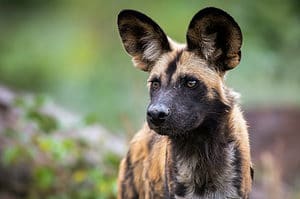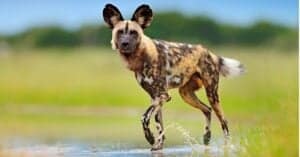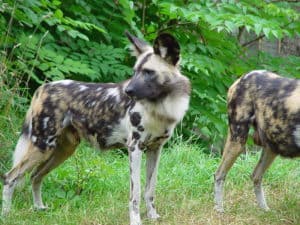Also known as the African painted dog and Cape hunting dog, the African wild dog (Lycaon pictus) is a wild canine native to sub-Saharan Africa. It is the only living member of the genus Lycaon, and it is the largest wild hound in Africa. Unlike Canis, it doesn’t have dewclaws, which is what makes it different.
African wild dogs are one of the favorite animals to see on a safari, though they are often mistakenly judged by their appearance. Their musky colors and fur patterns make them seem unkempt and unclean. They also travel in packs, making them appear confrontational and aggressive.
However, there is nothing quite as impressive as coming across a large pack of these magnificent animals in their natural habitats. Read on for more incredible facts about African wild dogs.
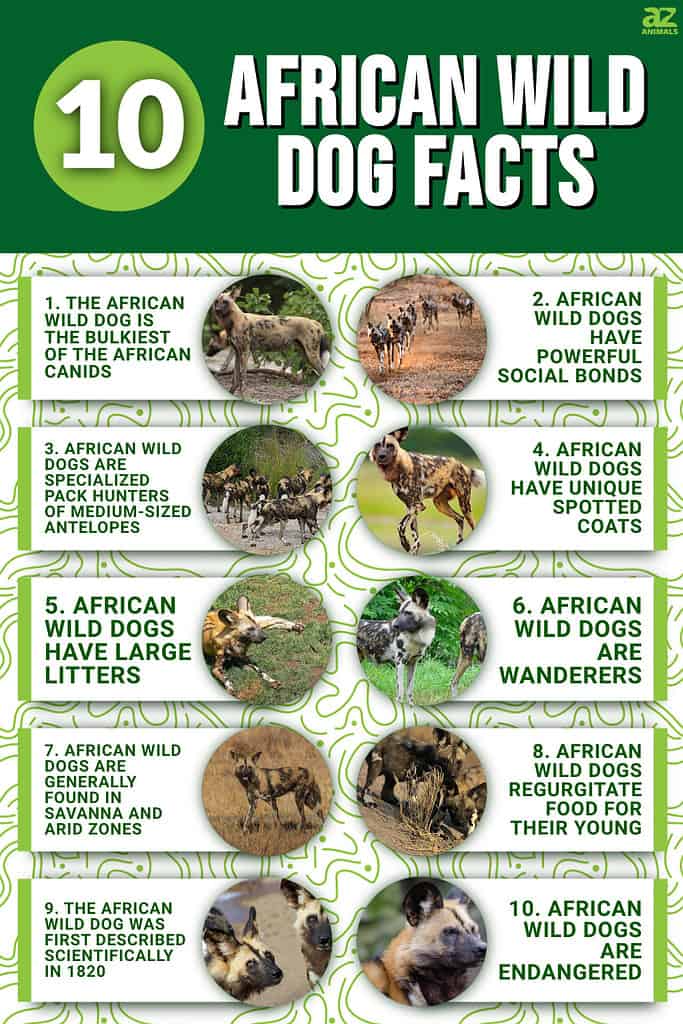
1. The African wild dog is the bulkiest of the African canids
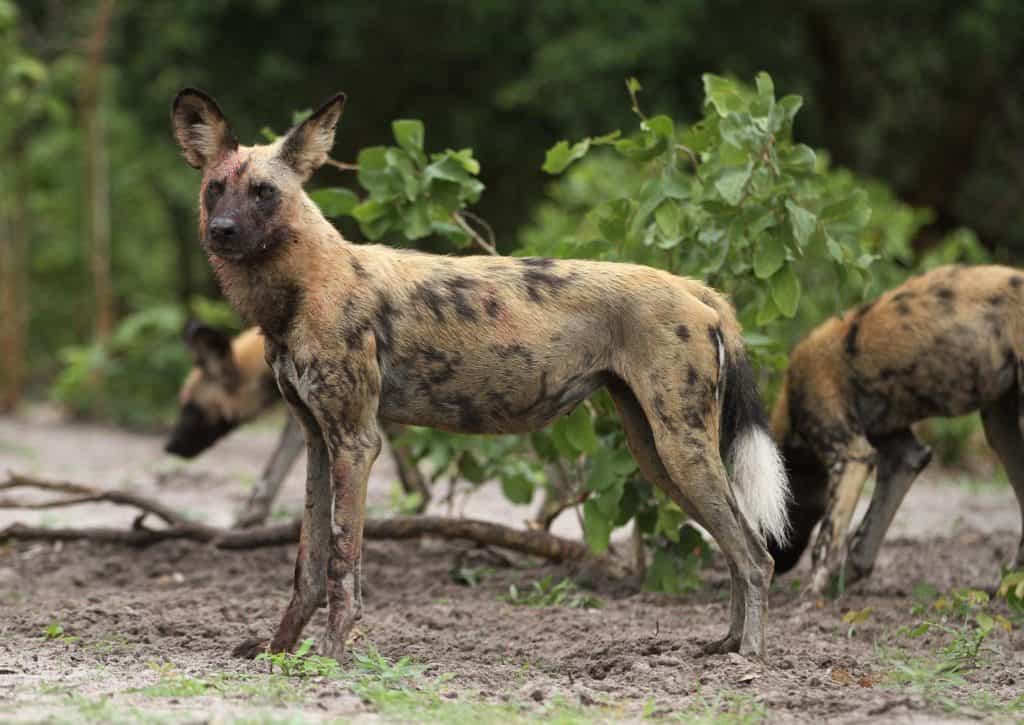
African wild dogs range in length from 29-43 inches and weigh between 39-79 lbs.
©Derek Keats / CC BY 2.0, Flickr – License
African wild dogs have long legs, long muzzles, and large stomachs. They range in length from 29-43 inches (75-110 cm) and weigh between 39-79 lbs (17-36 kg). Compared to other members of the genus Canis, the African wild dog is the bulkiest and most solidly built. On average, dogs from East Africa weigh around 44 to 55 lbs.
2. African wild dogs have powerful social bonds
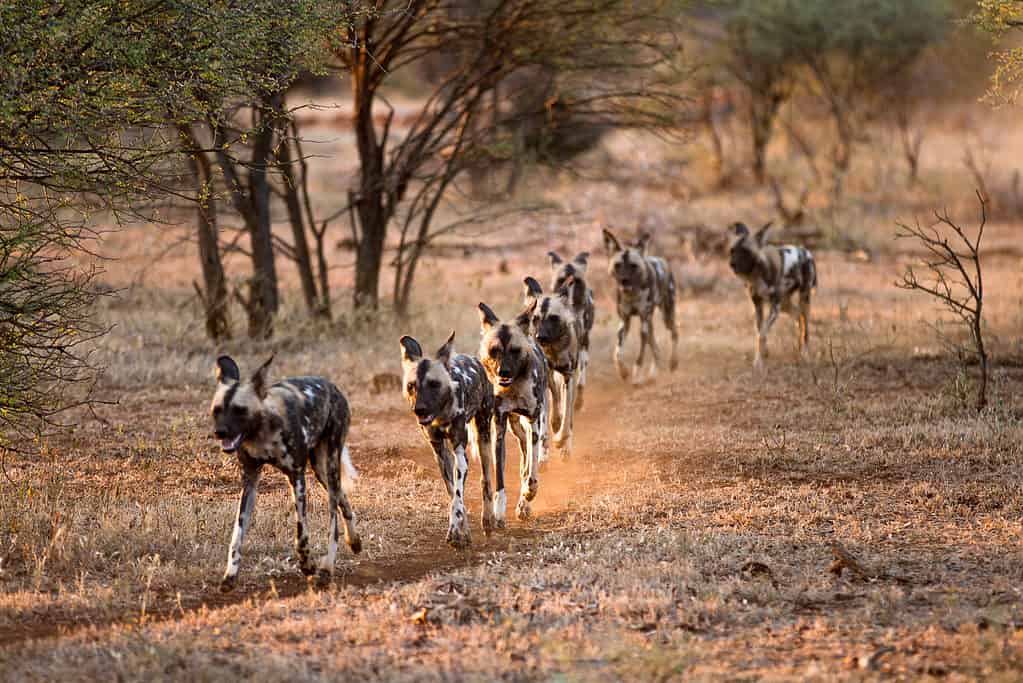
Wild dogs live in packs from 10 to 20, sometimes up to 30.
©charles Hopkins/Shutterstock.com
African wild dogs are very social animals. They gather in packs of about ten, but some groups may exceed twenty. The typical pack size in Selous and Moreni is eight or nine adults, while packs in Maasai Mara and Kruger National Park contain four or five. Each gender has its own dominance hierarchy, which is usually led by the oldest female or oldest male.
They usually sneeze to vote on pack decisions. The sneeze is a sharp exhalation through their nostrils and denotes agreement. They communicate through tail wags, touch, and various vocalizations, including a howl to rally a pack of wild dogs, a short bark to signify alarm, and a bell-like sound that can be heard over long distances.
3. African wild dogs are specialized pack hunters of medium-sized antelopes
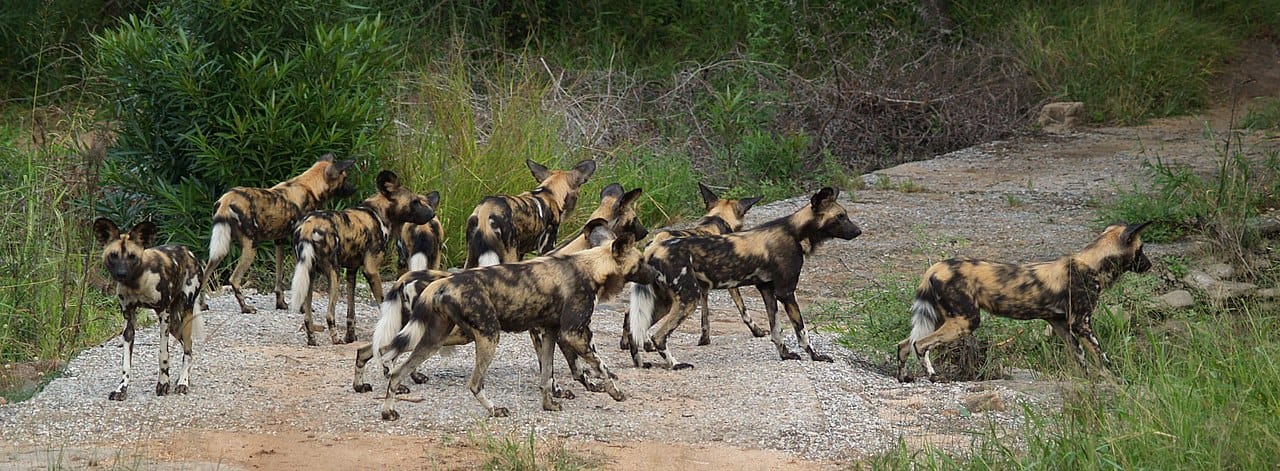
An African wild dog can chase after prey for up to 60 minutes.
©Bart Swanson(Bkswanson), CC BY-SA 3.0, via Wikimedia Commons – License
African wild dogs prefer to hunt antelopes but will also take down rodents, warthogs, wildebeest, and birds. Their hunting strategies depend on their target prey, but they often chase prey to exhaustion. In the case of antelopes, African wild dogs sneak into the herd and then run down one, repeatedly biting it on the belly and legs until it weakens.
An African wild dog can chase after prey for up to 60 minutes, running at about 41 miles per hour. They have a very high hunting success rate because they hardly give up.
4. African wild dogs have unique spotted coats
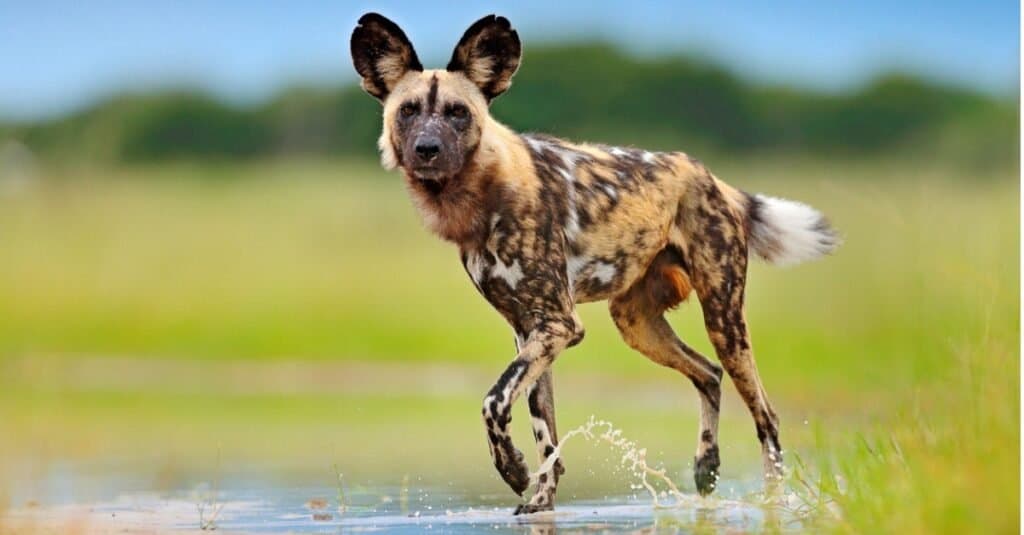
The African wild can be identified by its long legs and unique, irregular fur patterns.
©iStock.com/Ondrej Prosicky
The African wild dog’s scientific name, “Lycaon pictus,” is derived from their distinctive spotted coats, which means “painted wolf-like animal.” African wild dogs are well-known for their black, white, and yellow-spotted coats, each with a unique pattern. Their beautiful coat colors help them blend into their surroundings. Although each dog has its own unique pattern, most of them have a white-tipped tail, which helps pack members find each other during a hunt.
5. African wild dogs have large litters
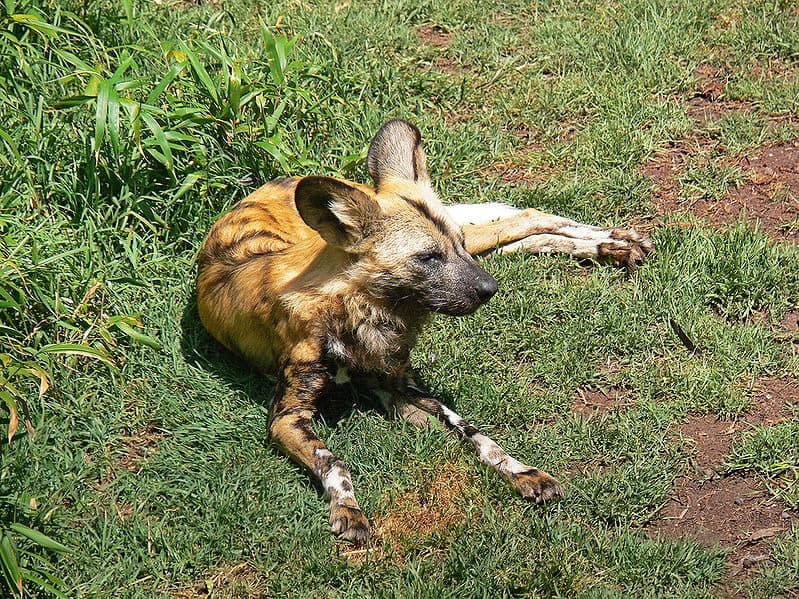
Female African wild dogs give birth to between 2 and 20 pups, with an average litter size of ten.
©Benjamint444, CC BY-SA 3.0, via Wikimedia Commons – License
Female African dogs give birth to between 2 and 20 pups, with an average litter size of ten– the largest of any canid. The female remains with the litter for a few weeks and relies on the other pack members to provide her with food. Although the litters are large, very few pups survive to adulthood. The dens may get flooded sometimes, or the puppies die from diseases. The young African wild dogs leave the den in 2 to 3 months but will still be fed by the entire pack until they are old enough to join or start a new hunting pack.
6. African wild dogs are wanderers
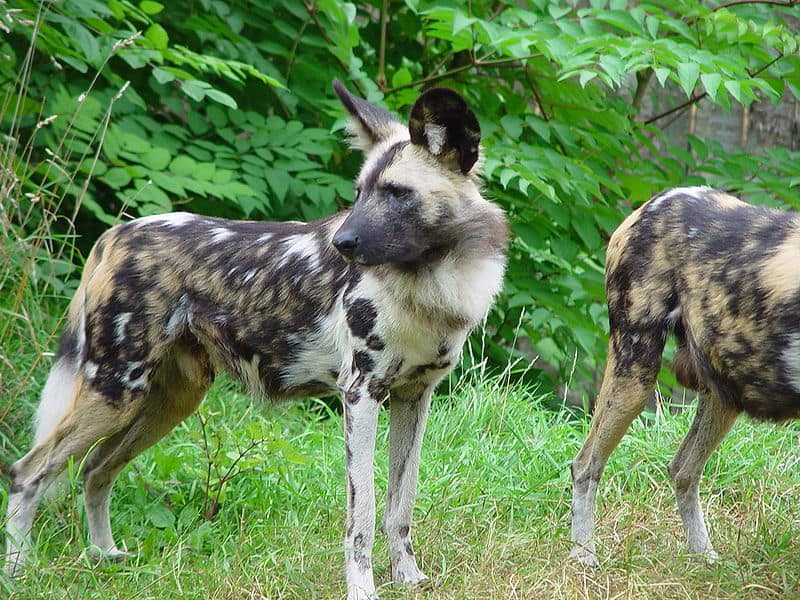
African Wild Dogs only remain in one location when they are denning, otherwise, they keep on the move.
©Mr. Philip Gabrielsen / Creative Commons – License
African wild dogs rarely stay in one place for long. They only stay in one location when they are denning. They require large territories to thrive since they can travel up to 50 km daily. For example, the wild dogs in Serengeti Tanzania have been known to roam an area of over 900 square miles.
7. African wild dogs are generally found in savanna and arid zones
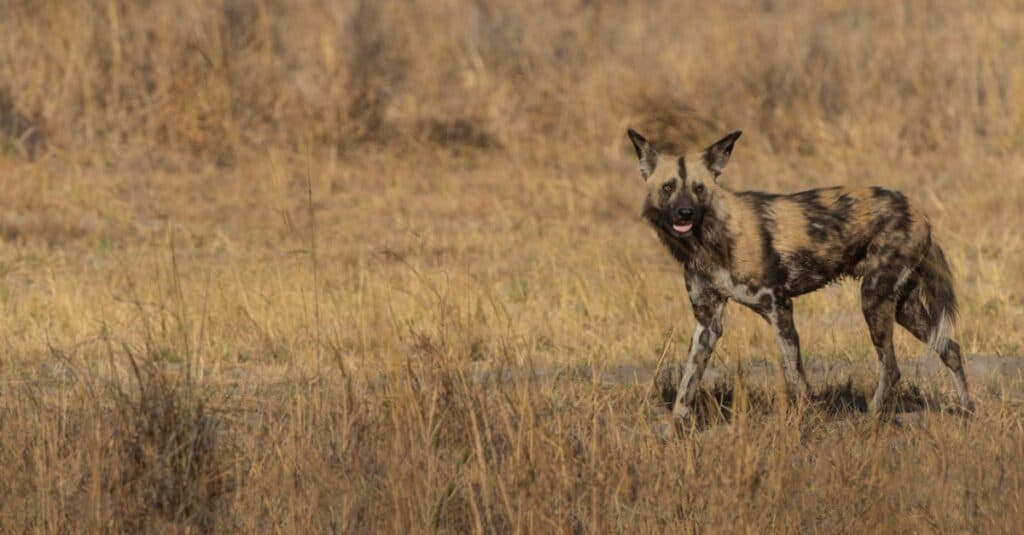
African wild dogs usually avoid forests, which obstruct their field of vision while pursuing prey.
©iStock.com/PK Visual Journeys
African wild dogs generally avoid forested areas because they obstruct their vision while pursuing prey. They prefer to inhabit savannas and arid zones to facilitate their hunting habits. The tropical grasslands bear drought-resistant vegetation even in the dry season, attracting several grazers like antelopes, one of the wild dog’s favorite prey.
8. African wild dogs regurgitate food for their young
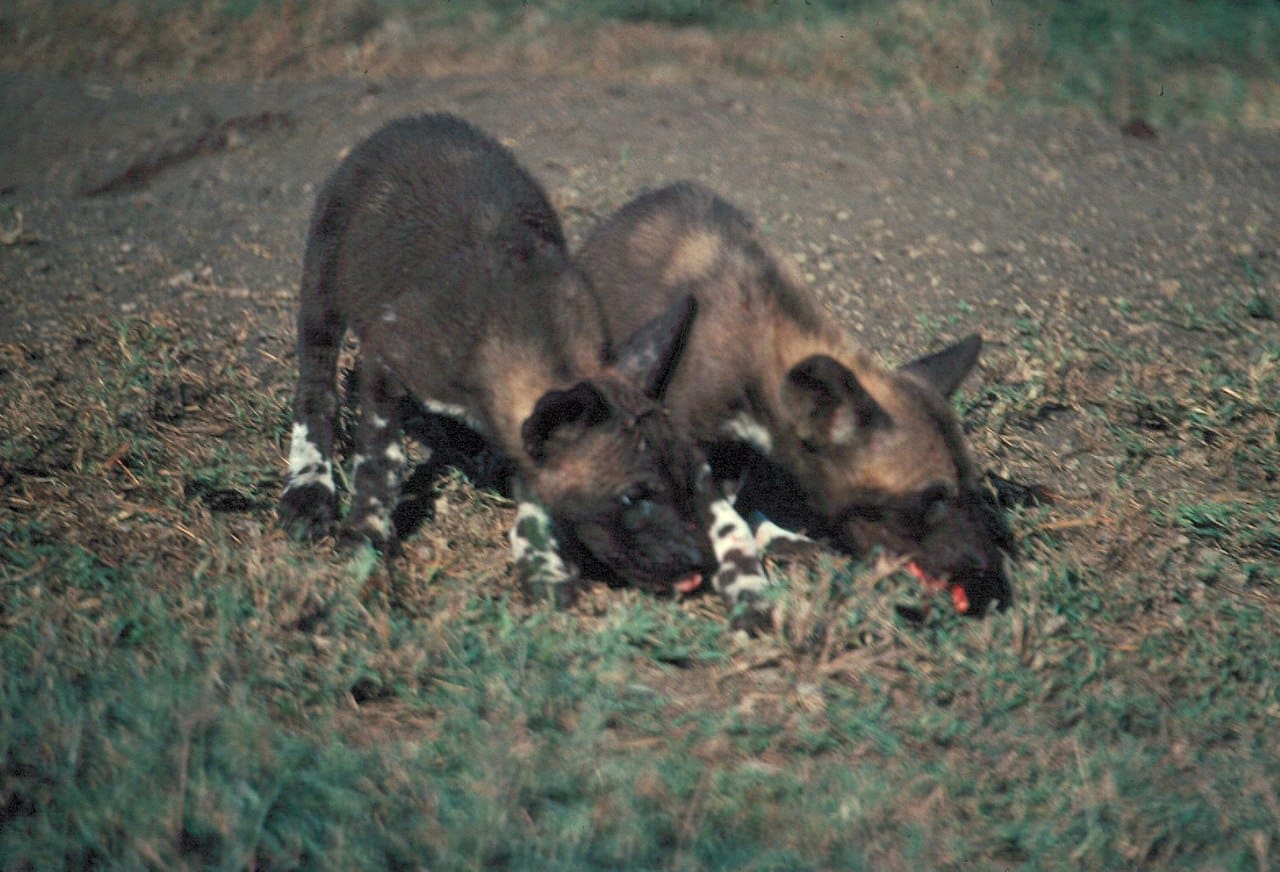
African wild dog pups are weaned at the age of five weeks.
©Colorado State University Libraries, CC BY-SA 4.0, via Wikimedia Commons – License
Not only do African wild dogs regurgitate food for their young members, but also for other adults. This is a unique behavior among all the predators. The pups are weaned at the age of five weeks and then fed regurgitated meat by all the other pack members. Puppies old enough to eat solid food are given priority at the kill. They eat before the dominant pair, and the subordinate adult dogs help feed and protect the young ones.
9. The African wild dog was first described scientifically in 1820
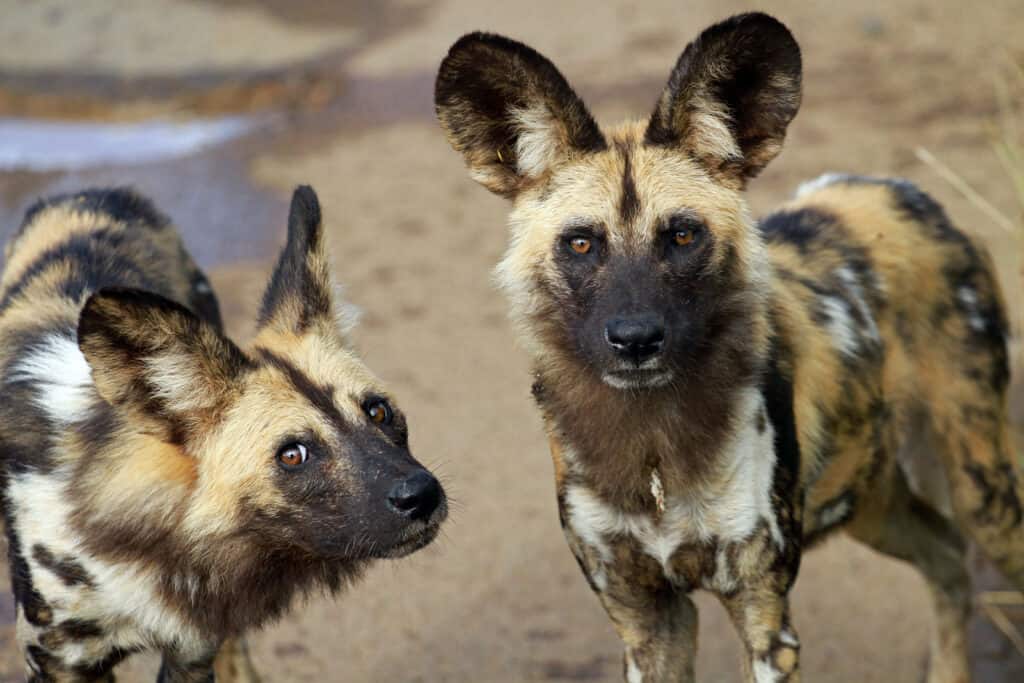
African wild dogs were first described in 1820 by Coenraad Jacob Temminck after examining a specimen from the Mozambique coast.
©bayazed/Shutterstock.com
Coenraad Jacob Temminck first described the wild dog in 1820 after examining a specimen from the coast of Mozambique. He scientifically named the animal Hyaena picta, a species of hyena. In 1827, Joshua Brookes recognized the animal as a canid and called it the Lycaon tricolor. Lycaon is a Greek word meaning “wolf-like.” The species name “tricolor” was later changed to “picta” to conform with the International Rules on Taxonomic Nomenclature.
10. African wild dogs are endangered
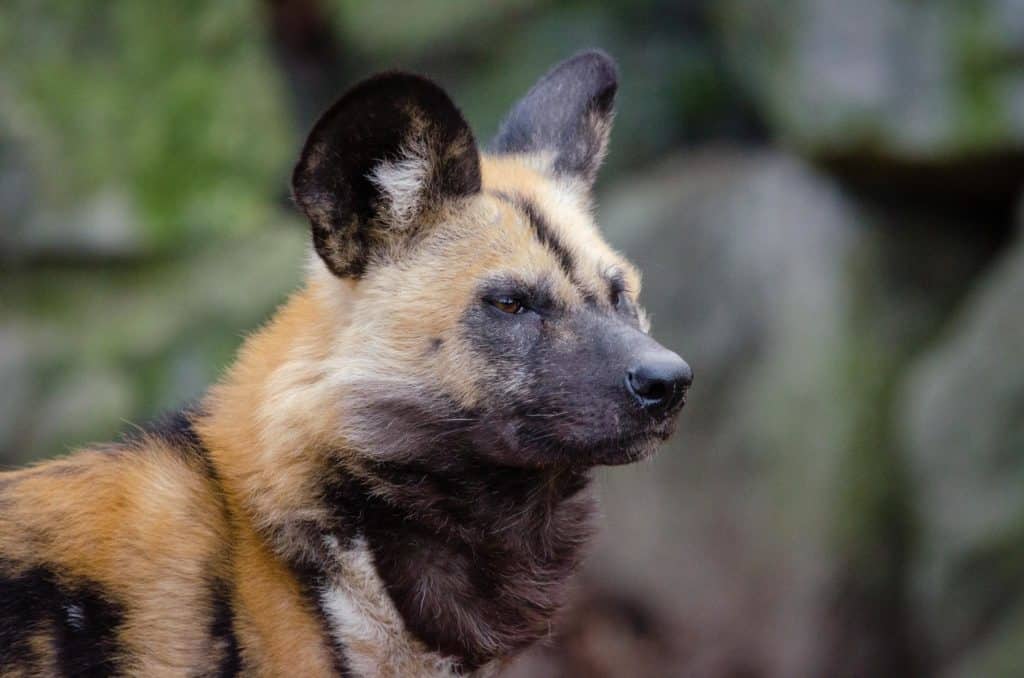
African wild dogs are currently found in only 10-25 countries in
Africa
, with 1,400-6,600 adults remaining out of a previous population of 500,000.
©Mathias Appel / Public domain, Flickr – License
African wild dogs have been gradually disappearing in many African regions. At one time, they roamed over forty countries in Sub-Saharan Africa, but they are currently found in only 10-25 countries in Africa. Approximately 1,400-6,600 adults remain out of the previous population of 500,000.
African wild dogs are currently found in various national parks and reserves but are a bit more scattered than they used to be. The numbers continue to decline due to habitat destruction, diseases, and human conflict. Their population densities are also low in areas where lions are abundant since lions dominate African wild dogs and contribute to their mortality rates.
The photo featured at the top of this post is © iStock.com/Ondrej Prosicky
Thank you for reading! Have some feedback for us? Contact the AZ Animals editorial team.



